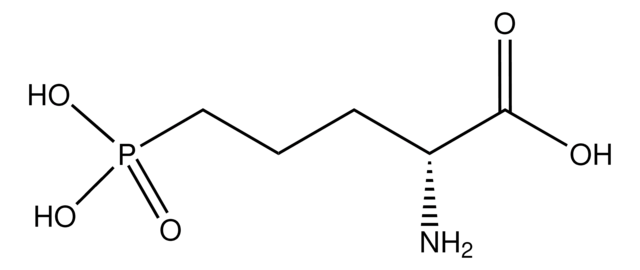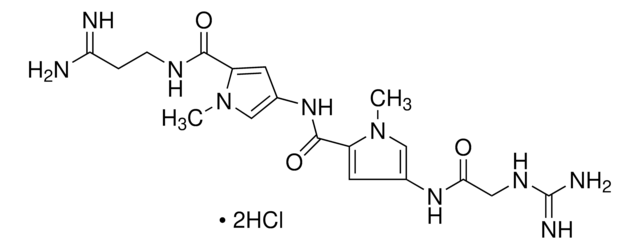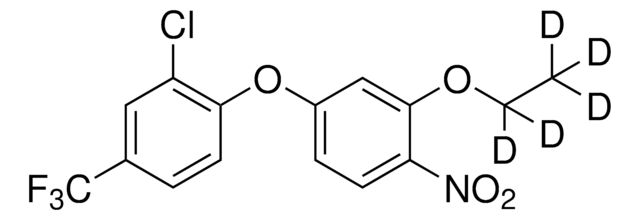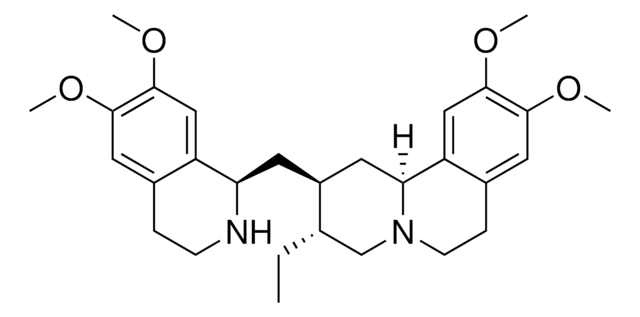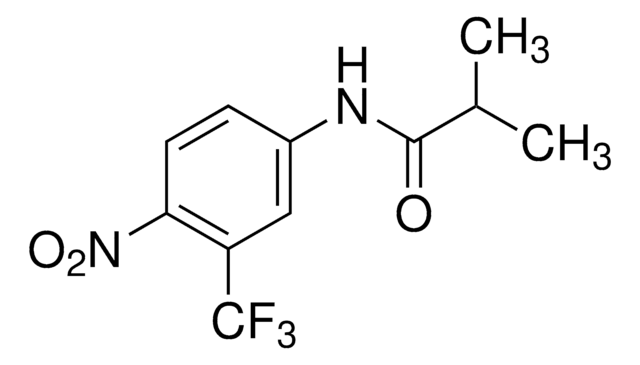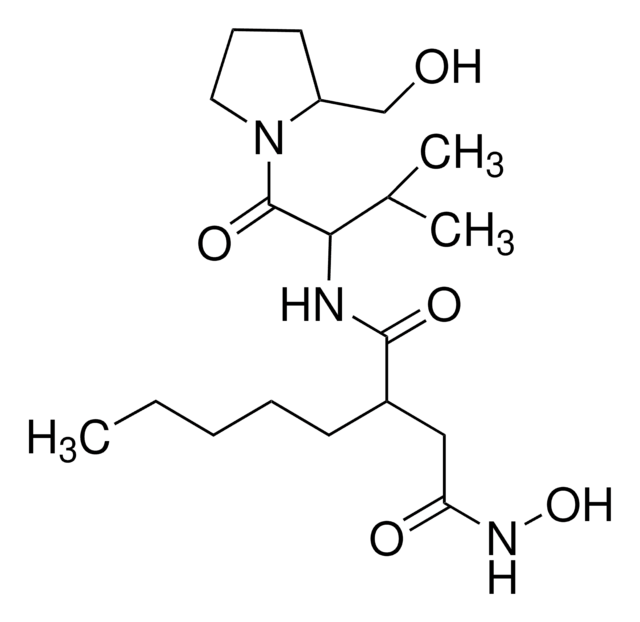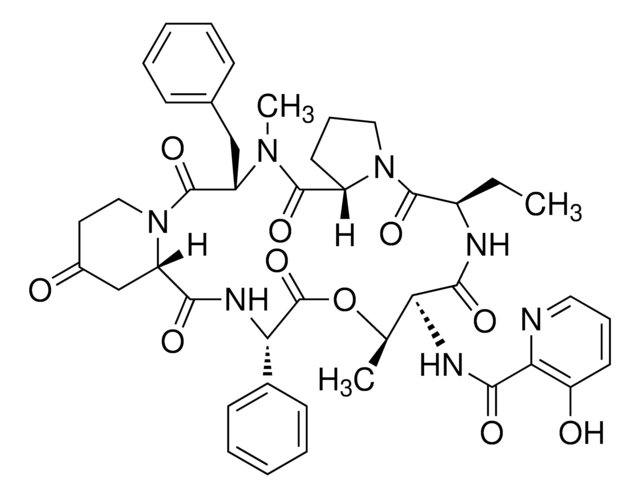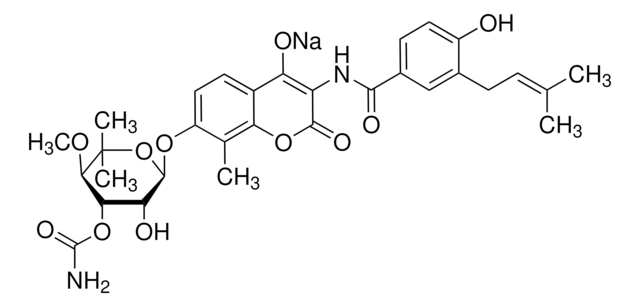A1410
Actinomycin D
from Streptomyces sp., ~98% (HPLC)
Sinónimos:
Actinomycin C1, Actinomycin IV, Dactinomycin
About This Item
Productos recomendados
origen biológico
Streptomyces sp.
Nivel de calidad
Ensayo
~98% (HPLC)
Formulario
powder
actividad óptica
[α]/D alpha: 28/D (Rotation: -315 degrees (c=0.25% in methanol))
color
red to orange
red, powder
mp
251-253
solubilidad
DMSO: 1 mg/mL
ethanol: soluble
espectro de actividad antibiótica
neoplastics
Modo de acción
DNA synthesis | interferes
temp. de almacenamiento
2-8°C
cadena SMILES
CC(C)[C@H]1NC(=O)[C@@H](NC(=O)c2ccc(C)c3OC4=C(C)C(=O)C(N)=C(C(=O)N[C@H]5[C@@H](C)OC(=O)[C@H](C(C)C)N(C)C(=O)CN(C)C(=O)[C@@H]6CCCN6C(=O)[C@H](NC5=O)C(C)C)C4=Nc23)[C@@H](C)OC(=O)[C@H](C(C)C)N(C)C(=O)CN(C)C(=O)[C@@H]7CCCN7C1=O
InChI
1S/C62H86N12O16/c1-27(2)42-59(84)73-23-17-19-36(73)57(82)69(13)25-38(75)71(15)48(29(5)6)61(86)88-33(11)44(55(80)65-42)67-53(78)35-22-21-31(9)51-46(35)64-47-40(41(63)50(77)32(10)52(47)90-51)54(79)68-45-34(12)89-62(87)49(30(7)8)72(16)39(76)26-70(14)58(83)37-20-18-24-74(37)60(85)43(28(3)4)66-56(45)81/h21-22,27-30,33-34,36-37,42-45,48-49H,17-20,23-26,63H2,1-16H3,(H,65,80)(H,66,81)(H,67,78)(H,68,79)/t33-,34-,36+,37+,42-,43-,44+,45+,48+,49+/m1/s1
Clave InChI
RJURFGZVJUQBHK-IIXSONLDSA-N
¿Está buscando productos similares? Visita Guía de comparación de productos
Descripción general
Aplicación
Acciones bioquímicas o fisiológicas
Precaución
Nota de preparación
Otras notas
Palabra de señalización
Danger
Frases de peligro
Consejos de prudencia
Clasificaciones de peligro
Acute Tox. 2 Oral - Carc. 1B - Repr. 1B
Código de clase de almacenamiento
6.1A - Combustible acute toxic Cat. 1 and 2 / very toxic hazardous materials
Clase de riesgo para el agua (WGK)
WGK 3
Punto de inflamabilidad (°F)
Not applicable
Punto de inflamabilidad (°C)
Not applicable
Equipo de protección personal
Eyeshields, Faceshields, Gloves, type P3 (EN 143) respirator cartridges
Elija entre una de las versiones más recientes:
¿Ya tiene este producto?
Encuentre la documentación para los productos que ha comprado recientemente en la Biblioteca de documentos.
Los clientes también vieron
Nuestro equipo de científicos tiene experiencia en todas las áreas de investigación: Ciencias de la vida, Ciencia de los materiales, Síntesis química, Cromatografía, Analítica y muchas otras.
Póngase en contacto con el Servicio técnico



